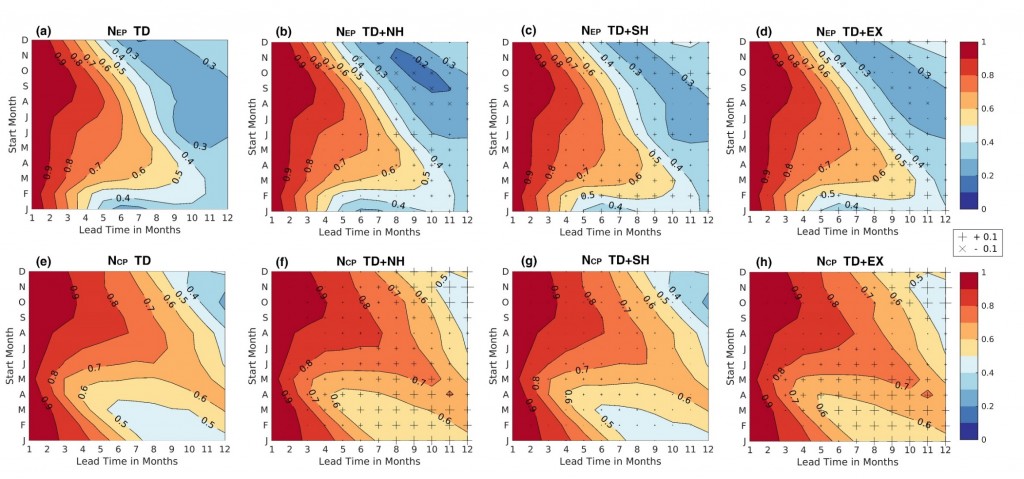Improving the Predictability of Two Types of ENSO by the Characteristics of Extratropical Precursors
Yu-Heng Tseng
El Niño-Southern Oscillation (ENSO) is the dominant interseasonal–interannual variability in the tropical Pacific and it exerts significant influence on weather and climate all over the world. The Central Pacific (CP) and Eastern Pacific (EP) types of ENSO events are distinctly different in terms of their forming locations and mechanisms. Using an updated physical-base statistical forecast model, the team led by Prof. Yu-heng Tseng shows that the forecast of CP indices has overall higher skills than that of EP indices due to the higher persistent forecast skill. At lead time beyond 6-month, the predictability of CP indices can be greatly enhanced by including the extratropical precursor from the North Pacific, confirming the ocean-atmosphere interaction associated with North Pacific Oscillation (NPO)/Victoria Mode (VM) evolution (the bottom panel in the Figure below). The predictability of EP indices can be moderately enhanced by including the extratropical precursor from the south, resulting from the charging of the equatorial Pacific (the top panel in the Figure below). Further information about the enhanced ENSO predictability and details can be found in Prof. Tseng’s recent paper published in Geophysical Research Letters.
Tseng, Y.-H., Huang, J.-H., Chen, H.-C. (2022), “Improving the predictability of two types of ENSO by the characteristics of extratropical precursors, Geophys. Res. Lett., p.e2020GL088345 https://agupubs.onlinelibrary.wiley.com/doi/abs/10.1029/2021GL097190











